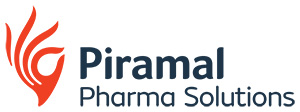A CDMO plays a critical role in developing and finalising the CMC section of your regulatory filing. An experienced and technically sound regulatory team at the CDMO is a valuable partner in ensuring a swift and seamless product approval by various regulatory authorities.
Product and process development
It is vital that the CDMO is aware of the important role that Quality by Design (QbD) plays in product and process development. The CDMO’s regulatory team is well placed to provide inputs to the development team in order to ensure that product and process development adhere to QbD principles. Even when the product development has been done by the Client, the CDMO has first-hand knowledge about equipment and processes derived from the vast number of products that they develop for customers. This is a critical factor that helps in determining the success of technology transfer operations.
As detailed in Pharmaceutical Development ICH Q8 (R2), essential aspects of QbD to be taken into account are as follows:
- Quality Target Product Profile (QTPP)
- Critical Quality Attributes (CQAs)
- Risk Assessment: Linking Material Attributes and Process Parameters to Drug Product CQAs
- Design Space
- Control Strategy
- Product Lifecycle Management and Continual Improvement
Products and processes developed in line with the principles of QbD outlined above have a greater chance of achieving successful registration and a speedy approval process.
Specification design
Another activity wherein the regulatory team’s expertise and experience is highly valued is the inputs provided during the drafting of specifications.
When designing specifications, the tests and limits should be based on ICH guidelines. Along with limits for organic and inorganic impurities, other impurities such as genotoxic impurities, elemental impurities and nitrosamine impurities should also be monitored and controlled in the drug substance and drug product. Nitrosamine impurities have recently attracted considerable attention from regulators worldwide.
An experienced regulatory team that is technically proficient and up-to-date with current regulatory developments and guidelines will be an indispensable asset in ensuring that the above requirements are met.
Authoring of quality overall summary
Most of the documents for CTD Module 3 are provided by the CDMO. These include information on components and composition, batch formula, manufacturing process, specifications, analytical method validations, information on packaging components, stability data, executed and commercial batch records, certificate of analysis etc.
Armed with this knowledge, the regulatory team of the CDMO is well equipped to author a summary of Module 3 i.e. the Quality Overall Summary (QOS).
eCTD publishing
Along with the CMC review and compilation an equally important role in which the regulatory team of the CDMO can help achieve registration success is the electronic i.e. eCTD publishing of the dossier. This activity is frequently outsourced by smaller drug companies not equipped with anin-house eCTD publishing team. The regulatory team of the CDMO can step in and help fill this gap. Since they are already involved in the review and compilation of the CMC section of the dossier, eCTD publishing would be one additional step in this collaboration that is mutually beneficial to both organisations.
Conclusion
Thus the effective regulatory partnership developed between the CDMO and the Client can lead to successful regulatory filings and faster approvals by leveraging their in-built efficiencies. An experienced and efficient regulatory team of the CDMO can shorten the time for review and compilation as they have the advantages of being involved in the design of the product and process first-hand and have the knowledge about similar products manufactured by them. This helps in faster response to queries from Health Authorities and consequently faster product approvals and speed to market.

